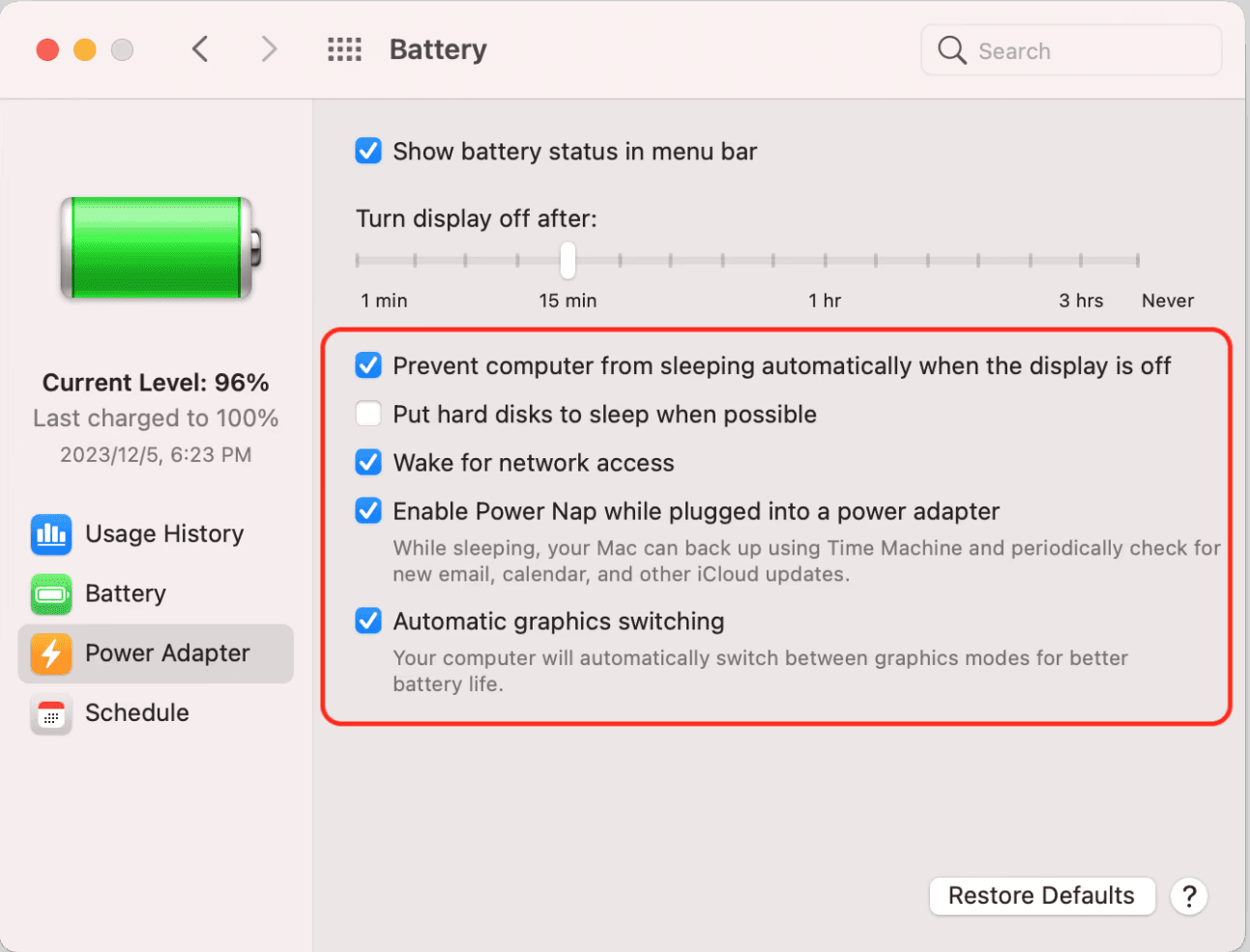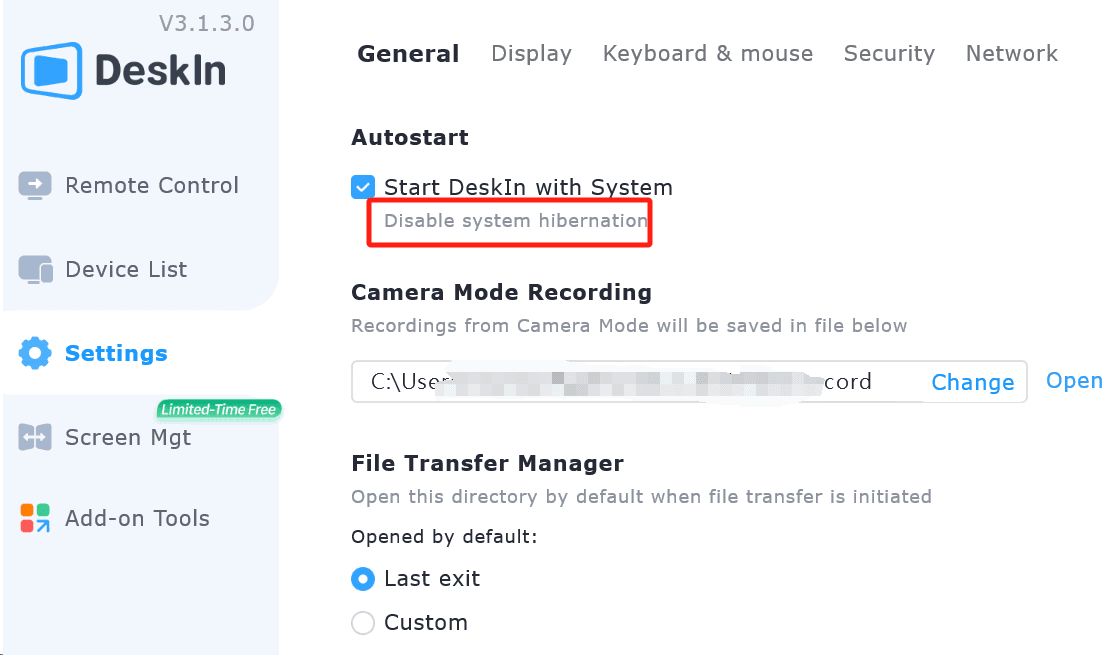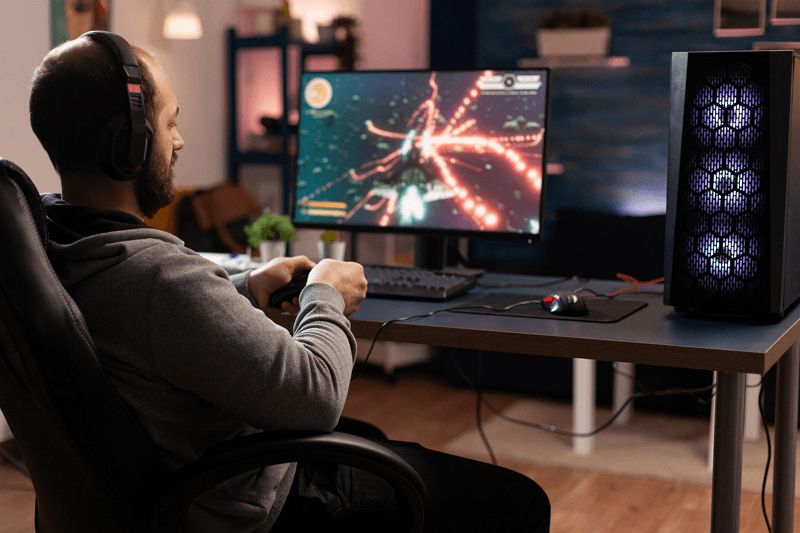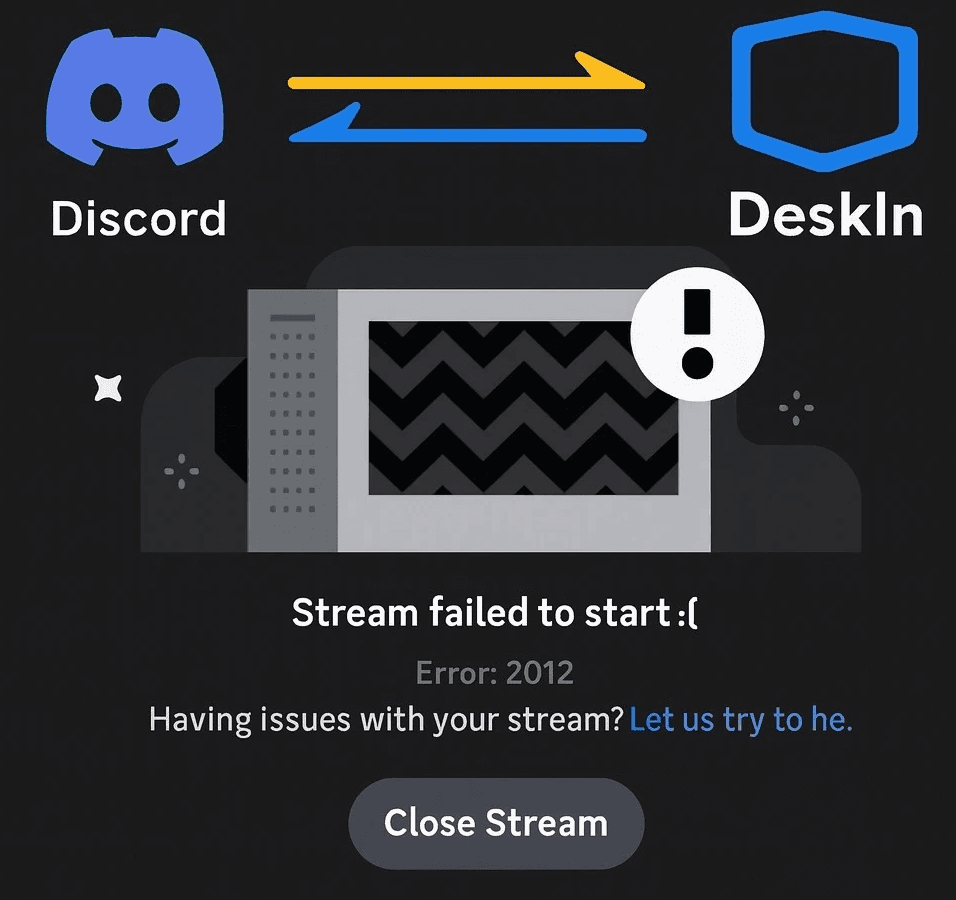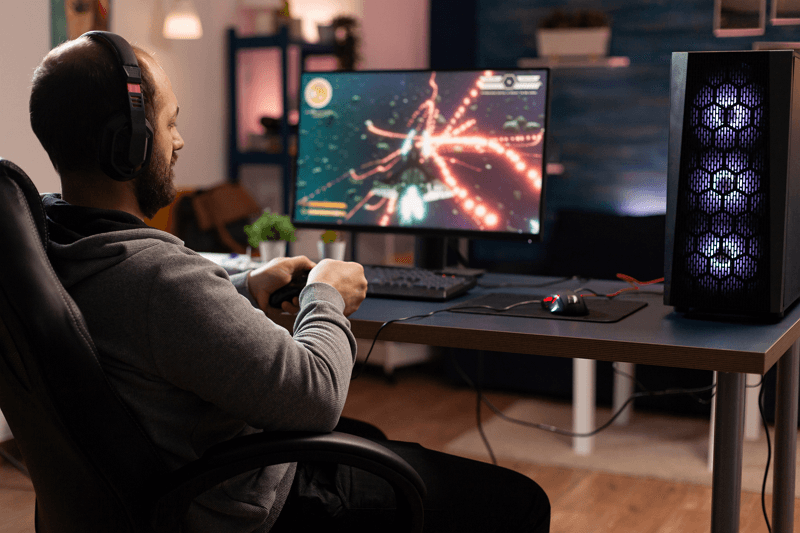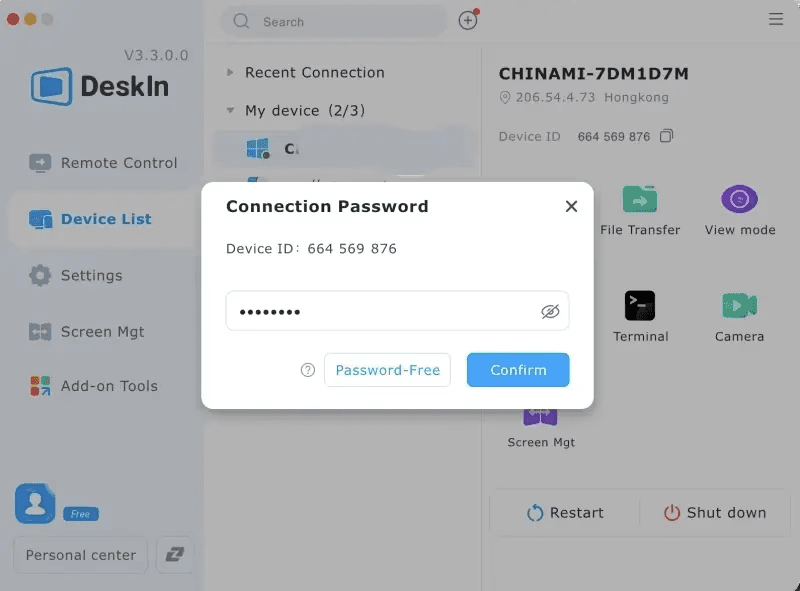Nowadays, constantly switching between devices can be inefficient, especially when it involves repeated actions or file transfers. Screen mirroring apps allow you to project your phone, tablet, or computer screen onto another device in real time. Whether you're presenting a slideshow, playing games on a bigger display, or providing tech support remotely, these apps for screen mirroring are powerful for productivity, entertainment, and collaboration.
With so many apps available for different platforms, you may find it hard to decide which one best suits your needs. In this guide, we've rounded up the 6 best screen mirroring apps, covering both free and premium options for Android, iPhone, PC, and Mac. Don't you want to waste time picking the best screen mirroring app? Just try DeskIn. Trust me, it will be your best partner!

Overview: How to Choose the Best Screen Mirroring App?
Before jumping into our top picks, it's important to understand what makes a screen mirroring app truly effective. Different users, whether students, remote workers, or gamers, have different needs, so here are the key factors to consider when choosing the right tool.
Device compatibility: Not all apps support every platform. Some are only for Android or iOS, while others offer cross-platform mirroring between multiple systems. Make sure the app you choose works seamlessly with your devices.
Video quality and latency: Look for apps that support high resolution (like 1080p or even 4K) and frame rates up to 60FPS for smooth playback, especially if you're gaming or streaming videos. Low latency is crucial for real-time interactions.
Control features: Some apps offer basic mirroring, while others allow remote control, annotation tools, or keyboard/mouse support. To actively operate your mirrored device, you'll need an app with interactive control.
Security and connection method: A good mirroring app should offer secure encryption and multiple connection options, like QR code scanning, PIN access, or account-based login. Bonus if it includes privacy features like screen masking or device whitelists.
Free vs. paid versions: Many apps offer limited functionality for free, but premium versions unlock better resolution, more devices, or additional features. Consider your use case and budget before committing.
With these factors in mind, let's explore the top 6 screen mirroring apps that stand out in both performance and usability.
Top 1. DeskIn
Supported Platforms: Windows, macOS, Android, iOS
Free Version Available: Yes (free for up to 3 devices, including commercial use)
DeskIn stands out as the best screen mirroring app for Android/iPhone to PC and Mac, thanks to its cross-platform support, high-definition performance, and zero-delay mirroring experience. It allows you to project your mobile screen to your computer effortlessly with support for 4K resolution at 60FPS and latency under 40ms. It's a powerful screen mirror app that caters to productivity, entertainment, and even remote support scenarios.
Beyond just display casting, DeskIn offers advanced interaction features, like remote control between your laptops, second screen extension (turn your iPad or phone into a second monitor), and even remote camera functionality. It's also the best free screen mirroring app for iPhone, offering robust security, ease of connection (no same-network requirement), and reliable performance even in poor network conditions.


👍 Pros:
High-definition mirroring (up to 4K 60FPS)
Extremely low latency, even over weak networks
Full remote control and interaction features
Works across Android, iOS, Windows, and macOS
The free version supports commercial use
Cons:
Advanced features (e.g., multiple device control, extended screens) require a paid plan
Here are brief simple steps to use DeskIn for seamless screen monitoring.
Download and install DeskIn on both your mobile phone and computer.
Log in with the same account on both of your devices.
Use the "device ID" and password on your target device to connect to your host device.
After connections, you can now mirror screens from your mobile device instantly, and even enjoy more professional remote control functions!


Top 2. Google Home
Supported Platforms: Android, iOS, Chromecast-enabled devices, Google Nest Hub
Free Version Available: Yes
Google Home is a simple and effective screen mirror app primarily designed for Android users who want to cast their device to a Chromecast-enabled display or smart TV. As the official app developed by Google, it ensures stable wireless mirroring for presentations, streaming, or casual screen sharing. Once connected to the same Wi-Fi network, users can mirror their entire screen or cast specific apps (like YouTube or Google Photos) with minimal setup.
Need to mirror without network restrictions? DeskIn works across different networks, which is ideal for remote support. Click the download button in the upper right corner to download DeskIn and experience its great features!
Though Google Home doesn't offer remote control or desktop-level functionality like some advanced tools, it excels at being an excellent free screen mirroring app for Android phones and tablets, perfect for everyday use in home entertainment and education. iPhone users can use the app, but native mirroring features are limited without third-party plugins.

👍 Pros:
It's free to use
Seamless casting to Chromecast, Nest Hub, or smart TVs
Reliable for Android-to-TV mirroring
Supports audio and video streaming from apps
Cons:
Requires all devices to be on the same Wi-Fi network
Limited compatibility with non-Google or non-Chromecast receivers
No remote control or multi-device interaction features
Top 3. ApowerMirror
Supported Platforms: Android, iOS, Windows, macOS, TV
Free Version Available: Yes (with limited features)
ApowerMirror is a versatile screen mirror app that supports full-screen casting from mobile devices to PC or TV, with added control features. It's ideal for users looking for not just screen mirroring but also real-time remote interaction, such as controlling an Android phone directly from a computer via mouse and keyboard. It supports both wired and wireless connections, offering flexible options for different usage scenarios.
Whether you're presenting a mobile demo during a virtual meeting, or simply want to mirror your iPhone or Android to a larger screen, ApowerMirror delivers sharp video quality and up to 4K resolution (in the paid version). It's especially strong as a reliable screen mirroring app, with screen recording, annotation, and game mode features enhancing its appeal.

👍 Pros:
Cross-platform mirroring with optional remote control
Supports 4K HD resolution and screen recording
Wireless and USB connection options
Good for teaching, gaming, and business use
Cons:
The free version has watermarks
Occasional lag on high-resolution wireless casting
Some features only available via paid plans
Top 4. LetsView
Supported Platforms: Android, iOS, Windows, macOS, Smart TV
Free Version Available: Yes
LetsView is a free screen mirror app that offers wireless mirroring across almost all major platforms. It supports screen casting from your Android or iPhone to PC, Mac, or even a smart TV, with no cable required. What sets LetsView apart is its user-friendly interface, built-in whiteboard, and screen recording tools, making it a strong choice for remote teaching, training sessions, and collaborative meetings.
Despite being free, LetsView provides surprisingly stable mirroring with decent image quality and low latency. While it doesn't offer advanced control like remote touch input or high-resolution options like 4K, it's a solid pick for everyday mirroring needs. If you want a free screen mirroring app for iPhone or Android without feature restrictions, LetsView is hard to beat.
If you want something more advanced and complete, then you should try DeskIn, which has whiteboards, calls, and more, and is high-performance with 4K image quality.

👍 Pros:
It's free to use, without watermarks or hidden costs
Wireless connection via QR code, PIN, or auto-detection
Includes screen recording, annotation, and whiteboard features
Easy setup across multiple platforms
Cons:
No remote control capabilities
Limited resolution and frame rate compared to premium tools
Occasional instability over poor Wi-Fi networks
Top 5. AirDroid Cast
Supported Platforms: Android, iOS, Windows, macOS, Web Browser
Free Version Available: Yes (limited features)
AirDroid Cast is a versatile screen monitoring app that supports casting from Android or iPhone to a PC, Mac, or even through a web browser, no installation required on the receiving device. It offers both local and remote casting, making it perfect for users who want to mirror their mobile screen to a PC for presentations, demos, or multitasking workflows.
A key advantage of AirDroid Cast is its remote control functionality, allowing users to control their mobile phone from the PC once mirrored (USB required for iOS). It also supports two-way audio, making it a great fit for online teaching and real-time communication. While its free version has some limitations (like session time and fewer features), the overall performance is stable and smooth.

👍 Pros:
Supports both local and remote screen mirroring
Cross-platform and works via browser
Allows remote control of mobile devices from a PC
Clean interface and low-latency performance
Cons:
Some features (e.g., remote control or extended sessions) require a premium upgrade
iOS remote control requires a USB connection
The free plan limits usage time and access
Top 6. iPhone Mirroring
Supported Platforms: iOS (iPhone/iPad) to Windows, Mac
Free Version Available: Yes
iPhone Mirroring is a lightweight screen mirrorring app developed specifically for iPhone and iPad users who want to cast their screen to a computer. It features fast, wireless screen sharing via AirPlay, making it a plug-and-play option without the need for cables or complex setup. Whether you're sharing media, demonstrating apps, or streaming gameplay, it delivers smooth performance with minimal delay.
What sets iPhone Mirroring apart is its high compatibility with the Apple ecosystem, allowing you to effortlessly screen mirror your iPhone/iPad on Mac computers. It also supports HD screen resolution and simple control tools for better presentation experiences. While it lacks advanced features like remote control, its ease of use makes it a strong contender for casual users.
Alternatively, DeskIn's remote control features are very powerful, so if you are looking for remote control software, then DeskIn is the right choice for you.


👍 Pros:
Optimized for iOS users
Wireless connection via AirPlay
Compatible with both Windows and macOS
Simple and clean interface
Cons:
It has system and chip requirements for Mac and iOS devices
Limited functionality compared to full-featured mirroring suites
May rely on Wi-Fi stability for best performance
Comparison: Best Screen Mirroring Apps at a Glance
Still not sure which screen mirror app is right for you? Here's a side-by-side comparison of the top picks to help you make an informed decision.
App | Platform Support | Video Quality | Remote Control | Free Version |
DeskIn | Android, iPhone, Windows, macOS | Up to 4K 60FPS | ✅ Yes | ✅ Yes |
Google Home | Android → Chromecast / Smart TV | Up to 1080p | ❌ No | ✅ Yes |
ApowerMirror | Android, iPhone, Windows, macOS | Up to 2K | ✅ Yes | ✅ Limited |
LetsView | Android, iPhone, Windows, macOS | 1080p (stable) | ❌ No | ✅ Yes |
AirDroid Cast | Android, iPhone, Windows, macOS | HD / 4K (premium) | ✅ Yes | ✅ Limited |
iPhone Mirroring | iPhone → Windows/macOS | Up to 1080p | ❌ No | ✅ Yes |
Final Verdict: Which is the Best Screen Mirroring App?
Choosing the best screen mirroring app ultimately depends on your specific needs, whether it's seamless Android to PC casting, high-resolution display, or remote control features. For basic screen casting, tools like Google Home or LetsView are simple and effective. If you need advanced features like cross-platform support and real-time device control, premium options like ApowerMirror or AirDroid Cast may be worth considering.
However, if you're looking for a balance of power, performance, and price, DeskIn stands out as the top recommendation. It delivers 4K-quality mirroring, remote control, and multi-platform compatibility, all for free, making it the best screen mirroring app for Android to PC and iPhone to desktop scenarios alike. Whether you're a casual user or a professional, DeskIn covers all bases without compromise.

Nowadays, constantly switching between devices can be inefficient, especially when it involves repeated actions or file transfers. Screen mirroring apps allow you to project your phone, tablet, or computer screen onto another device in real time. Whether you're presenting a slideshow, playing games on a bigger display, or providing tech support remotely, these apps for screen mirroring are powerful for productivity, entertainment, and collaboration.
With so many apps available for different platforms, you may find it hard to decide which one best suits your needs. In this guide, we've rounded up the 6 best screen mirroring apps, covering both free and premium options for Android, iPhone, PC, and Mac. Don't you want to waste time picking the best screen mirroring app? Just try DeskIn. Trust me, it will be your best partner!

Overview: How to Choose the Best Screen Mirroring App?
Before jumping into our top picks, it's important to understand what makes a screen mirroring app truly effective. Different users, whether students, remote workers, or gamers, have different needs, so here are the key factors to consider when choosing the right tool.
Device compatibility: Not all apps support every platform. Some are only for Android or iOS, while others offer cross-platform mirroring between multiple systems. Make sure the app you choose works seamlessly with your devices.
Video quality and latency: Look for apps that support high resolution (like 1080p or even 4K) and frame rates up to 60FPS for smooth playback, especially if you're gaming or streaming videos. Low latency is crucial for real-time interactions.
Control features: Some apps offer basic mirroring, while others allow remote control, annotation tools, or keyboard/mouse support. To actively operate your mirrored device, you'll need an app with interactive control.
Security and connection method: A good mirroring app should offer secure encryption and multiple connection options, like QR code scanning, PIN access, or account-based login. Bonus if it includes privacy features like screen masking or device whitelists.
Free vs. paid versions: Many apps offer limited functionality for free, but premium versions unlock better resolution, more devices, or additional features. Consider your use case and budget before committing.
With these factors in mind, let's explore the top 6 screen mirroring apps that stand out in both performance and usability.
Top 1. DeskIn
Supported Platforms: Windows, macOS, Android, iOS
Free Version Available: Yes (free for up to 3 devices, including commercial use)
DeskIn stands out as the best screen mirroring app for Android/iPhone to PC and Mac, thanks to its cross-platform support, high-definition performance, and zero-delay mirroring experience. It allows you to project your mobile screen to your computer effortlessly with support for 4K resolution at 60FPS and latency under 40ms. It's a powerful screen mirror app that caters to productivity, entertainment, and even remote support scenarios.
Beyond just display casting, DeskIn offers advanced interaction features, like remote control between your laptops, second screen extension (turn your iPad or phone into a second monitor), and even remote camera functionality. It's also the best free screen mirroring app for iPhone, offering robust security, ease of connection (no same-network requirement), and reliable performance even in poor network conditions.


👍 Pros:
High-definition mirroring (up to 4K 60FPS)
Extremely low latency, even over weak networks
Full remote control and interaction features
Works across Android, iOS, Windows, and macOS
The free version supports commercial use
Cons:
Advanced features (e.g., multiple device control, extended screens) require a paid plan
Here are brief simple steps to use DeskIn for seamless screen monitoring.
Download and install DeskIn on both your mobile phone and computer.
Log in with the same account on both of your devices.
Use the "device ID" and password on your target device to connect to your host device.
After connections, you can now mirror screens from your mobile device instantly, and even enjoy more professional remote control functions!


Top 2. Google Home
Supported Platforms: Android, iOS, Chromecast-enabled devices, Google Nest Hub
Free Version Available: Yes
Google Home is a simple and effective screen mirror app primarily designed for Android users who want to cast their device to a Chromecast-enabled display or smart TV. As the official app developed by Google, it ensures stable wireless mirroring for presentations, streaming, or casual screen sharing. Once connected to the same Wi-Fi network, users can mirror their entire screen or cast specific apps (like YouTube or Google Photos) with minimal setup.
Need to mirror without network restrictions? DeskIn works across different networks, which is ideal for remote support. Click the download button in the upper right corner to download DeskIn and experience its great features!
Though Google Home doesn't offer remote control or desktop-level functionality like some advanced tools, it excels at being an excellent free screen mirroring app for Android phones and tablets, perfect for everyday use in home entertainment and education. iPhone users can use the app, but native mirroring features are limited without third-party plugins.

👍 Pros:
It's free to use
Seamless casting to Chromecast, Nest Hub, or smart TVs
Reliable for Android-to-TV mirroring
Supports audio and video streaming from apps
Cons:
Requires all devices to be on the same Wi-Fi network
Limited compatibility with non-Google or non-Chromecast receivers
No remote control or multi-device interaction features
Top 3. ApowerMirror
Supported Platforms: Android, iOS, Windows, macOS, TV
Free Version Available: Yes (with limited features)
ApowerMirror is a versatile screen mirror app that supports full-screen casting from mobile devices to PC or TV, with added control features. It's ideal for users looking for not just screen mirroring but also real-time remote interaction, such as controlling an Android phone directly from a computer via mouse and keyboard. It supports both wired and wireless connections, offering flexible options for different usage scenarios.
Whether you're presenting a mobile demo during a virtual meeting, or simply want to mirror your iPhone or Android to a larger screen, ApowerMirror delivers sharp video quality and up to 4K resolution (in the paid version). It's especially strong as a reliable screen mirroring app, with screen recording, annotation, and game mode features enhancing its appeal.

👍 Pros:
Cross-platform mirroring with optional remote control
Supports 4K HD resolution and screen recording
Wireless and USB connection options
Good for teaching, gaming, and business use
Cons:
The free version has watermarks
Occasional lag on high-resolution wireless casting
Some features only available via paid plans
Top 4. LetsView
Supported Platforms: Android, iOS, Windows, macOS, Smart TV
Free Version Available: Yes
LetsView is a free screen mirror app that offers wireless mirroring across almost all major platforms. It supports screen casting from your Android or iPhone to PC, Mac, or even a smart TV, with no cable required. What sets LetsView apart is its user-friendly interface, built-in whiteboard, and screen recording tools, making it a strong choice for remote teaching, training sessions, and collaborative meetings.
Despite being free, LetsView provides surprisingly stable mirroring with decent image quality and low latency. While it doesn't offer advanced control like remote touch input or high-resolution options like 4K, it's a solid pick for everyday mirroring needs. If you want a free screen mirroring app for iPhone or Android without feature restrictions, LetsView is hard to beat.
If you want something more advanced and complete, then you should try DeskIn, which has whiteboards, calls, and more, and is high-performance with 4K image quality.

👍 Pros:
It's free to use, without watermarks or hidden costs
Wireless connection via QR code, PIN, or auto-detection
Includes screen recording, annotation, and whiteboard features
Easy setup across multiple platforms
Cons:
No remote control capabilities
Limited resolution and frame rate compared to premium tools
Occasional instability over poor Wi-Fi networks
Top 5. AirDroid Cast
Supported Platforms: Android, iOS, Windows, macOS, Web Browser
Free Version Available: Yes (limited features)
AirDroid Cast is a versatile screen monitoring app that supports casting from Android or iPhone to a PC, Mac, or even through a web browser, no installation required on the receiving device. It offers both local and remote casting, making it perfect for users who want to mirror their mobile screen to a PC for presentations, demos, or multitasking workflows.
A key advantage of AirDroid Cast is its remote control functionality, allowing users to control their mobile phone from the PC once mirrored (USB required for iOS). It also supports two-way audio, making it a great fit for online teaching and real-time communication. While its free version has some limitations (like session time and fewer features), the overall performance is stable and smooth.

👍 Pros:
Supports both local and remote screen mirroring
Cross-platform and works via browser
Allows remote control of mobile devices from a PC
Clean interface and low-latency performance
Cons:
Some features (e.g., remote control or extended sessions) require a premium upgrade
iOS remote control requires a USB connection
The free plan limits usage time and access
Top 6. iPhone Mirroring
Supported Platforms: iOS (iPhone/iPad) to Windows, Mac
Free Version Available: Yes
iPhone Mirroring is a lightweight screen mirrorring app developed specifically for iPhone and iPad users who want to cast their screen to a computer. It features fast, wireless screen sharing via AirPlay, making it a plug-and-play option without the need for cables or complex setup. Whether you're sharing media, demonstrating apps, or streaming gameplay, it delivers smooth performance with minimal delay.
What sets iPhone Mirroring apart is its high compatibility with the Apple ecosystem, allowing you to effortlessly screen mirror your iPhone/iPad on Mac computers. It also supports HD screen resolution and simple control tools for better presentation experiences. While it lacks advanced features like remote control, its ease of use makes it a strong contender for casual users.
Alternatively, DeskIn's remote control features are very powerful, so if you are looking for remote control software, then DeskIn is the right choice for you.


👍 Pros:
Optimized for iOS users
Wireless connection via AirPlay
Compatible with both Windows and macOS
Simple and clean interface
Cons:
It has system and chip requirements for Mac and iOS devices
Limited functionality compared to full-featured mirroring suites
May rely on Wi-Fi stability for best performance
Comparison: Best Screen Mirroring Apps at a Glance
Still not sure which screen mirror app is right for you? Here's a side-by-side comparison of the top picks to help you make an informed decision.
App | Platform Support | Video Quality | Remote Control | Free Version |
DeskIn | Android, iPhone, Windows, macOS | Up to 4K 60FPS | ✅ Yes | ✅ Yes |
Google Home | Android → Chromecast / Smart TV | Up to 1080p | ❌ No | ✅ Yes |
ApowerMirror | Android, iPhone, Windows, macOS | Up to 2K | ✅ Yes | ✅ Limited |
LetsView | Android, iPhone, Windows, macOS | 1080p (stable) | ❌ No | ✅ Yes |
AirDroid Cast | Android, iPhone, Windows, macOS | HD / 4K (premium) | ✅ Yes | ✅ Limited |
iPhone Mirroring | iPhone → Windows/macOS | Up to 1080p | ❌ No | ✅ Yes |
Final Verdict: Which is the Best Screen Mirroring App?
Choosing the best screen mirroring app ultimately depends on your specific needs, whether it's seamless Android to PC casting, high-resolution display, or remote control features. For basic screen casting, tools like Google Home or LetsView are simple and effective. If you need advanced features like cross-platform support and real-time device control, premium options like ApowerMirror or AirDroid Cast may be worth considering.
However, if you're looking for a balance of power, performance, and price, DeskIn stands out as the top recommendation. It delivers 4K-quality mirroring, remote control, and multi-platform compatibility, all for free, making it the best screen mirroring app for Android to PC and iPhone to desktop scenarios alike. Whether you're a casual user or a professional, DeskIn covers all bases without compromise.


Play x Work
All at Once
DeskIn Remote Game
only $14.32 USD 🎉 Limited on July 16-31
Add promo code: deskinsummer1







